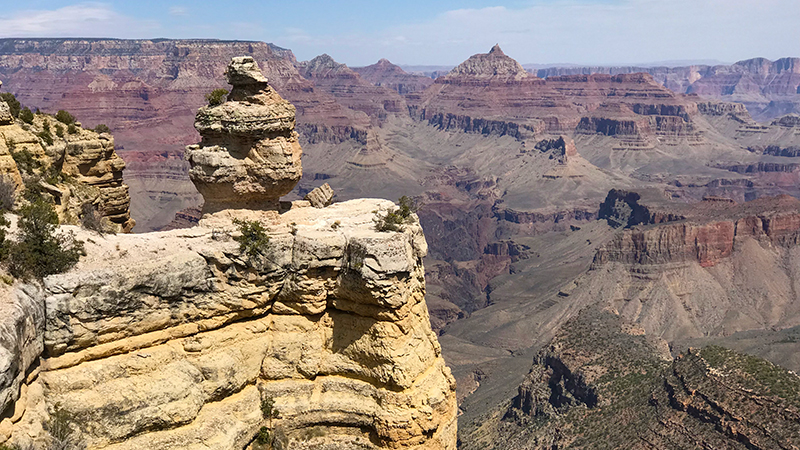
Desert View is a small settlement on the South Rim located 25 miles east of Grand Canyon Village near the eastern edge of Grand Canyon National Park. Arizona Highway 64, also known as Desert View Drive, is a scenic road that connects Desert View with Grand Canyon Village. For visitors coming into the park via the East Entrance, a stop at Desert View provides the first views of Grand Canyon.
Reaching Desert View, is a 25 mile drive on Desert View Drive that takes about 35 minutes if you don’t stop along the way. You’ll be tempted though because on the drive, you’ll pass:
- Six developed canyon viewpoints
- Four picnic areas
- Five unmarked pullouts
- And the Tusayan Museum and Ruin Site
Most people begin their Desert View Drive adventure in Grand Canyon Village, stopping at the scenic viewpoints and roadside pullouts one-by-one on the way to Desert View and the historic Watchtower. But we did the exact opposite.
We got up early and drove straight to the Desert View Watchtower so we could eat breakfast there and check out the sights before the spring break crowds descended. We then worked our way, one vista point and pullout after another, back to Grand Canyon Village (opposite the crowds), also stopping at the Tusayan Ruin and Museum and enjoying a picnic lunch. The entire experience took us about 4.5 hours.
Here are the sights traveling from west to east on Desert View Drive, starting in Grand Canyon Village:
Pipe Creek Vista
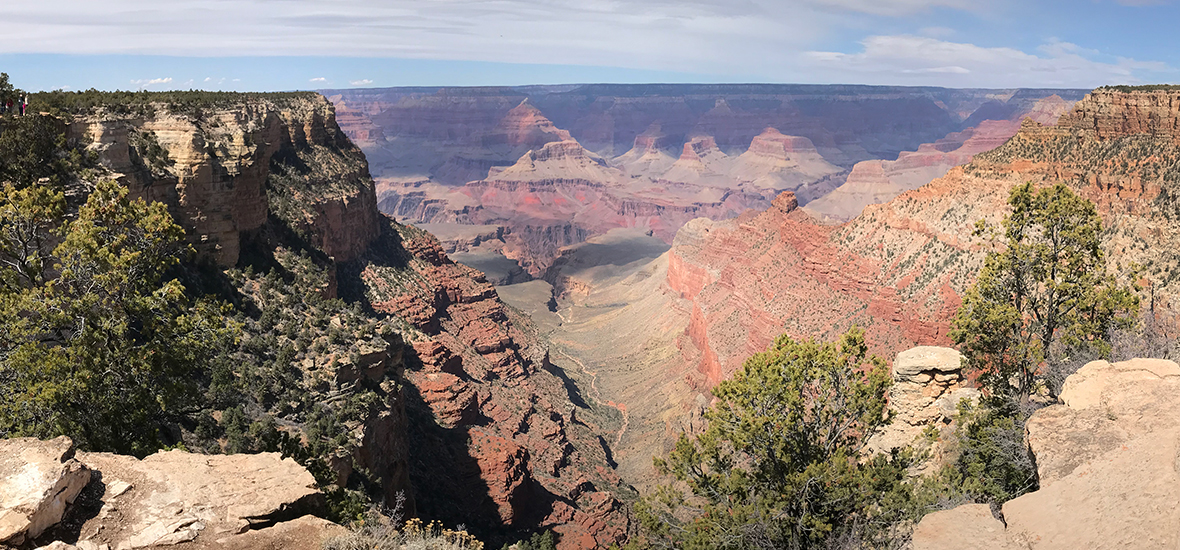
Located on Desert View Drive between the Grand Canyon Visitor Center and the South Kaibab Trailhead at Yaki Point, Pipe Creek Vista offers spectacular views of Pipe Creek, the major canyon between the Kaibab Trail and the Bright Angel Trail.
Pipe Creek Vista sits on the Rim Trail, which stretches along the Grand Canyon South Rim from Hermit’s Rest to the South Kaibab Trailhead.
Yaki Point
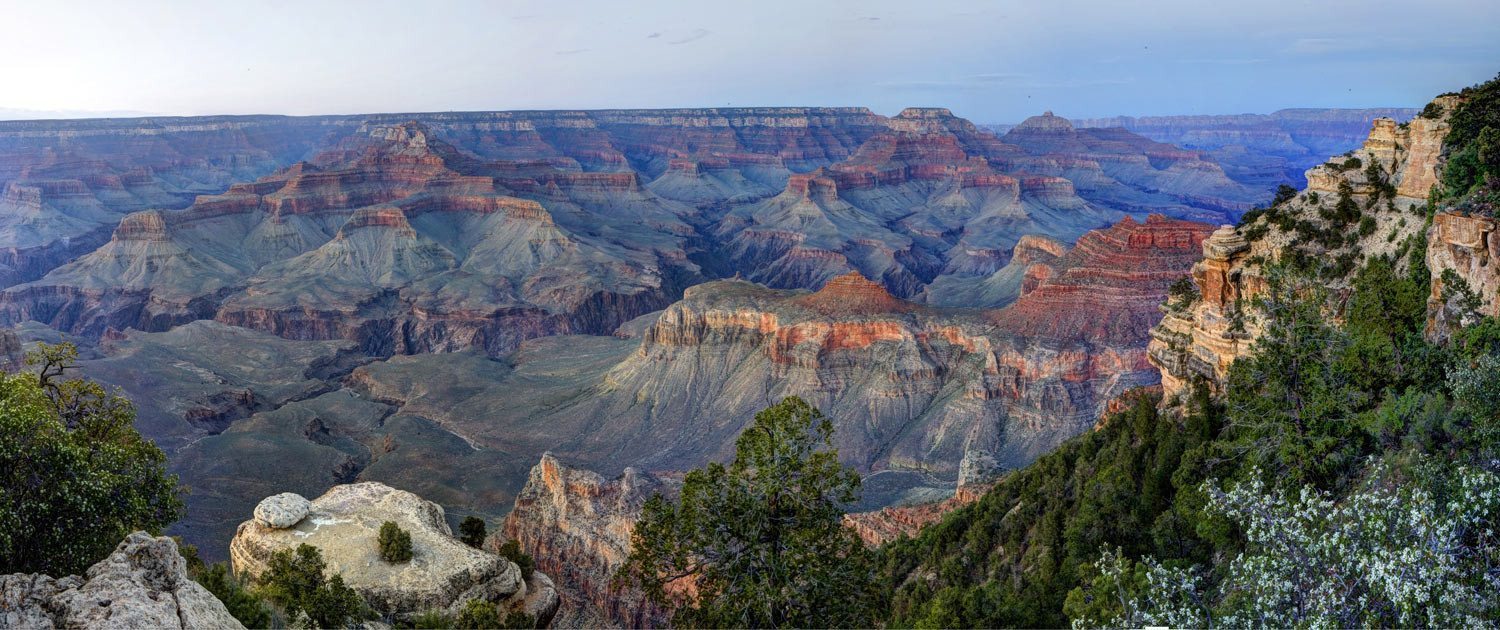
At an elevation of 7,262 feet, Yaki Point is one of the most popular overlooks to watch the sunrise and sunset on the South Rim. The scenic overlook is accessed by a 1.5 mile spur road off Desert View Drive and it is the only viewpoint on Desert View Drive only accessible by walking or riding the free Kaibab Rim Route (Orange) Shuttle Bus.
The west-facing views from Yaki Point include the Bright Angel Trail, part of the Tonto Trail and the South Kaibab Trail as it travels down Cedar Ridge and O’Neill Butte. The east-facing views include Cremation Creek, Newton Butte, and Clear Creek.
Pullout: Duck On A Rock
Early mapmakers saw castles and temples in the rocks of Grand Canyon and named the features as such, likewise, some rock formations received more playful names. At this Desert View Drive roadside pullout, the vertical rock formation is known as “Duck on a Rock.” Decade after decade, visitors come to this spot to look for the duck and imagine what other rock formations resemble.
While the duck in the “Duck on a Rock” formation is the smallest topmost rock segment, if you look at the entire vertical, bulging formation, our family thought it looks more like a big fat bear with a small head sitting down with it’s four legs pointing to the left. Due to erosion, nothing in Grand Canyon stays the same, and one day, this formation will likely take a different shape.
Grandview Point
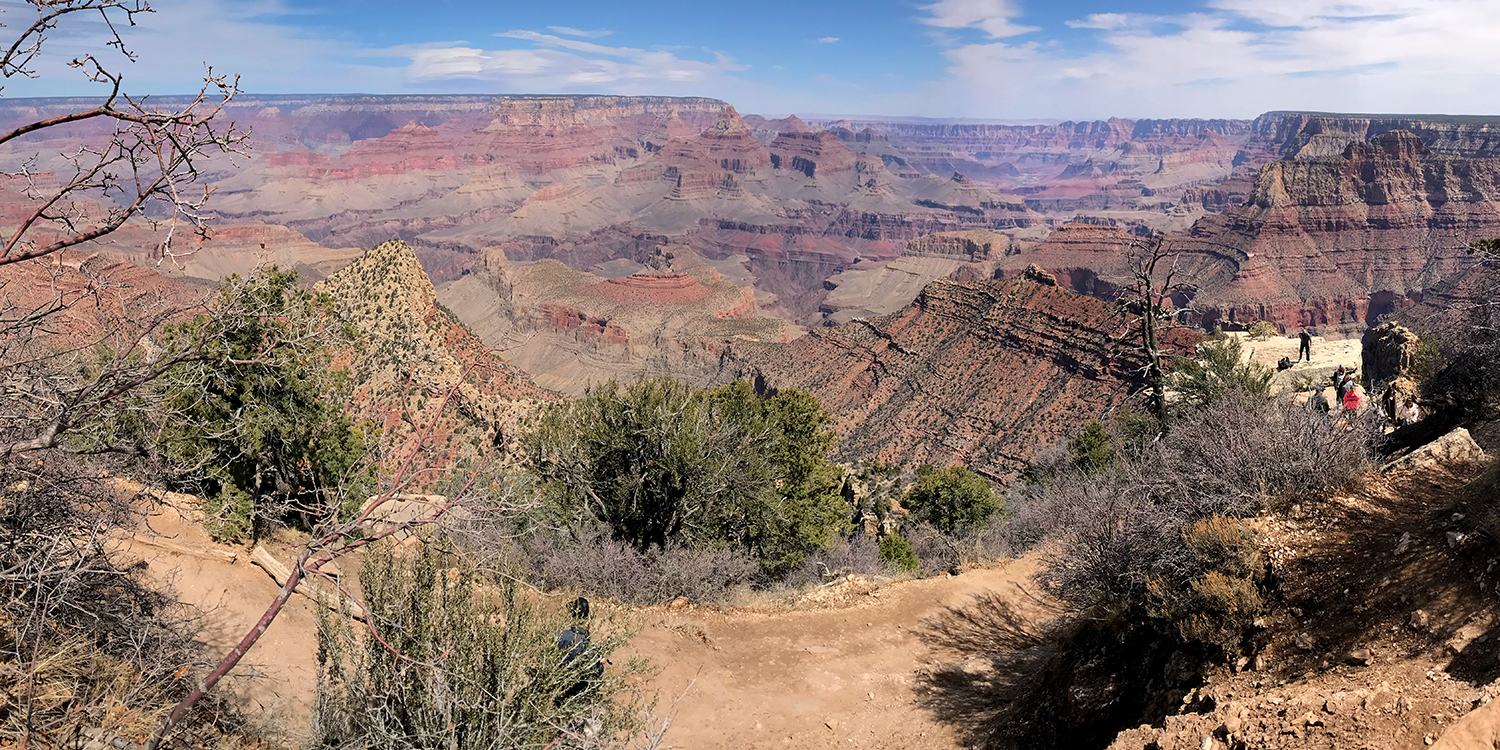
Sitting at 7,399 feet elevation, Grandview Point is a scenic overlook on Desert View Drive in Grand Canyon National Park and the trailhead for the historic Grandview Trail. The vista point offers magnificent panoramic views of Grand Canyon and the Colorado River below, including prominent buttes like Rama Shrine, Krishna Shine, Vishnu Shrine, and Shiva Temple.
Grandview is also a popular stop because it is also the location of a historic hotel that no longer exists and the upper portion of an old copper mining establishment.
Moran Point
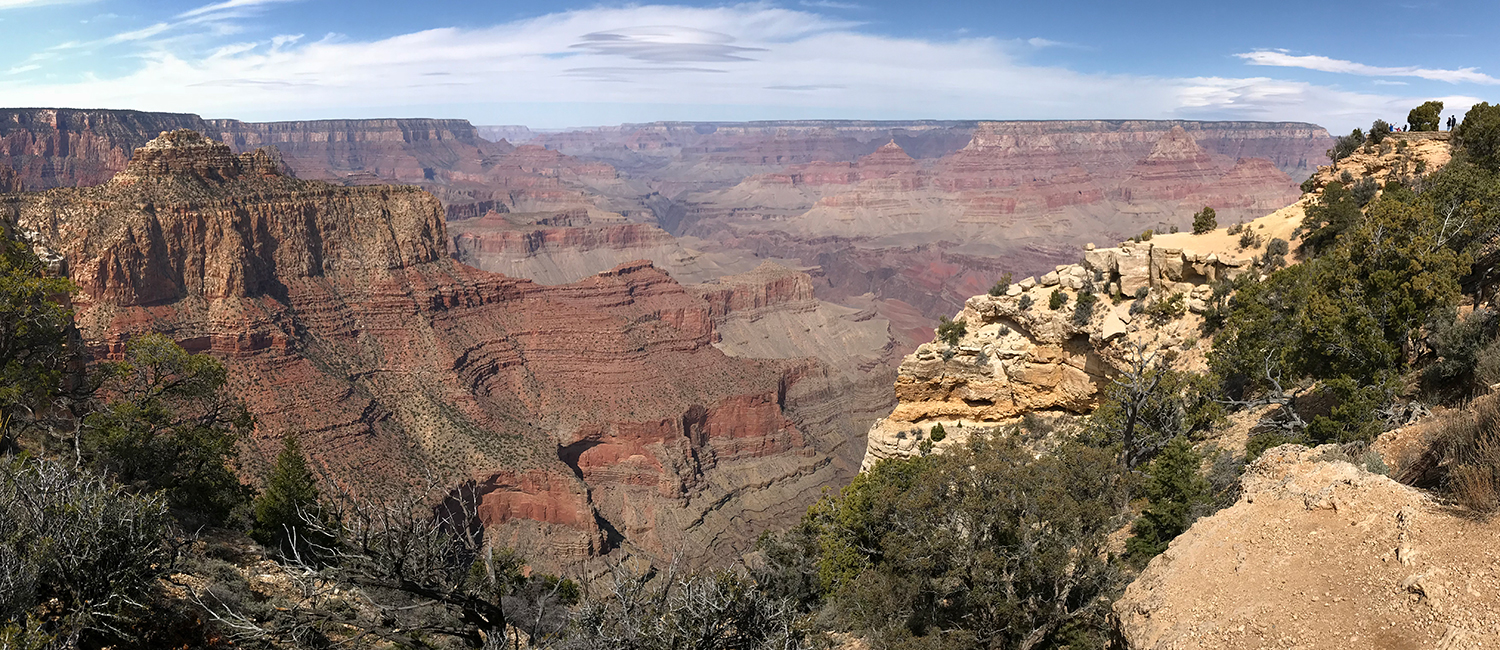
Named for the famous painter Thomas Moran, Moran Point Scenic Overlook sits on the South Rim of Grand Canyon on Desert View Drive directly south of the Cape Royal (on the North Rim) at an elevation of 7,160 feet.
At Moran Point, three main rock groups are clearly visible, including the Layered Paleozoic Rocks that make up most of the Grand Canyon’s depth; the Grand Canyon Supergroup, and the Vishnu Basement Rocks, which are the oldest at Grand Canyon.
Tusayan Ruin And Museum
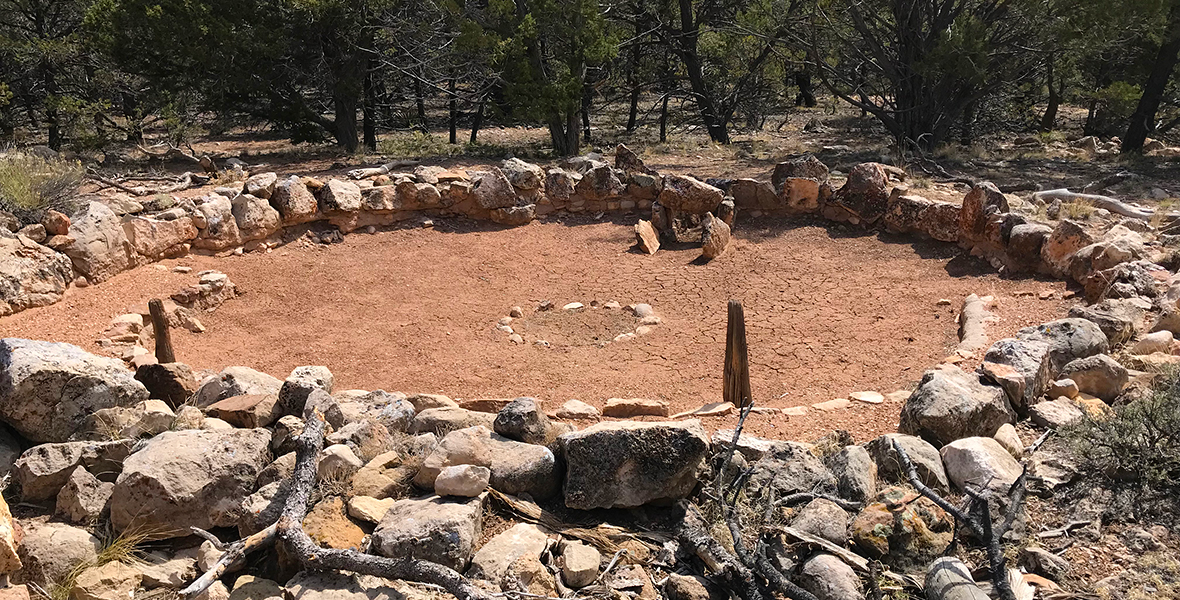
The Tusayan Ruins are the remains of a small 800 year old Ancestral Puebloan Village.
Located 3 miles west of Desert View Watchtower near the south rim of the Grand Canyon, the settlement featured a central plaza surrounded by storage rooms that held food for the winter, ceremonial structures, and living quarters. A mostly flat 0.1 mile gravel trail circles around the ruin and the small, square, two room Tusayan Museum has exhibits that bring the ruins to life and tell the story of the prehistoric people.
Roadside Pullouts
Along with the six improved scenic overlooks on Desert View Drive, there are five unnamed, unmarked pullouts along the road that also offer amazing views of the colorful Grand Canyon and often, there are far fewer people at the pullouts than the official viewpoints.
We travel with a huge ice chest in the back of the truck and food for all three meals each day, so we opted to picnic at the roadside pullouts over the scenic overlooks because we could park right along the edge of the road and enjoy the views, instead of parking farther away in a parking lot. We skipped the picnic areas because they were on the opposite side of the road, without a view.
Lipan Point
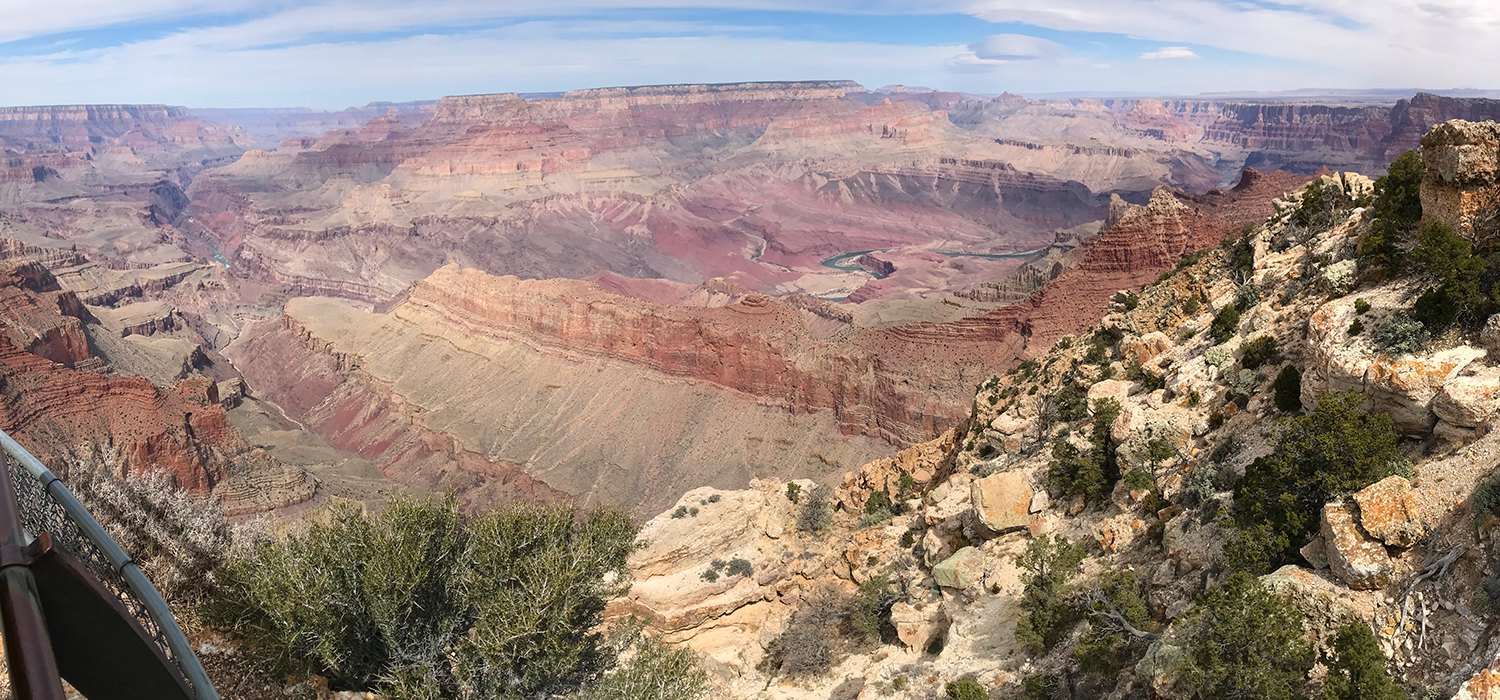
Sitting at an elevation of 7,360 feet, Lipan Point offers an almost 360 degree panoramic view of Grand Canyon, including Hance Rapid, the Grand Canyon Supergroup, Unkar Delta, and the San Francisco Peaks. Falling the full height of a three story building, Hance Rapid is one of the most hazardous whitewater rapids on the Colorado River. The rocks of the Supergroup date from 740 million to 1,200 million years old. The Unkar Delta is a 1,000 year old ancestral Puebloan farming village.
Navajo Point
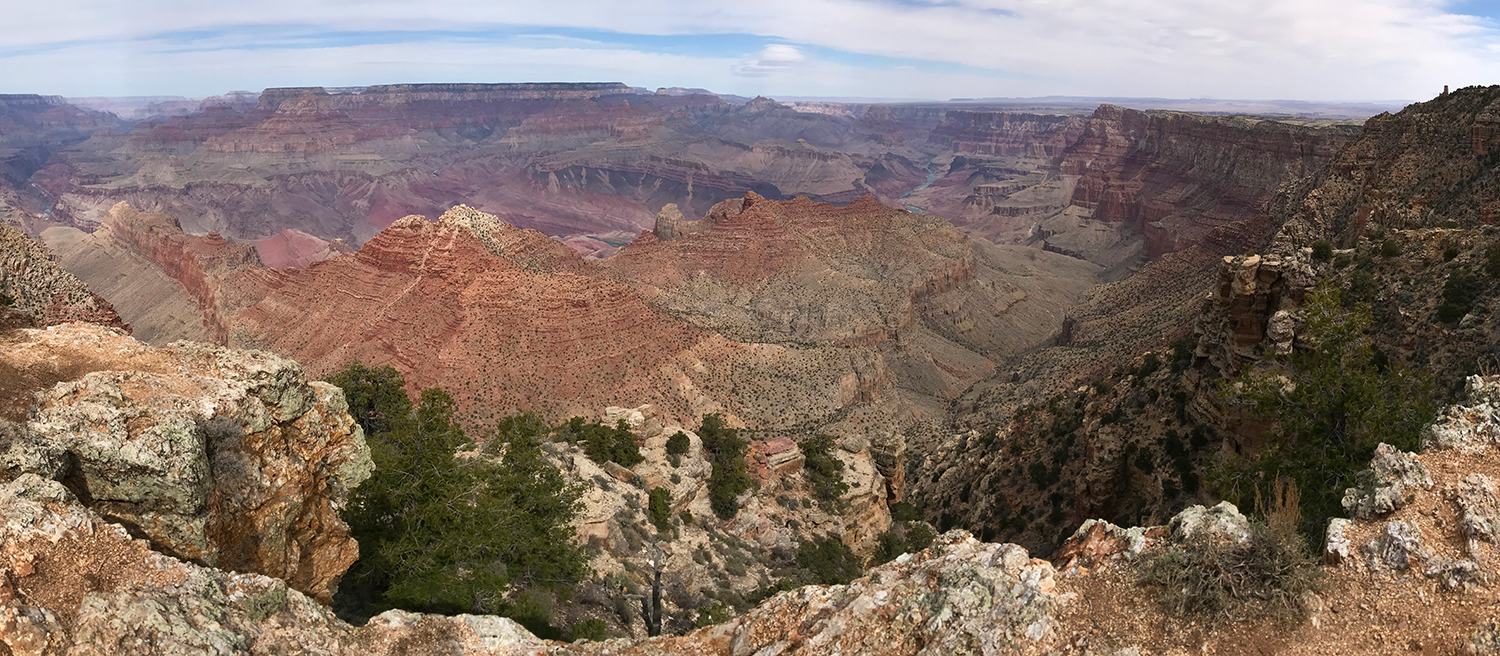
Sitting on Grand Canyon’s South Rim, Navajo Point is the highest elevation scenic overlook. The only vista point that is higher is standing on the very top observation deck of the Desert View Watchtower. It offers a spectacular view of the Watchtower standing tall on the cliffs and breathtaking panoramic vistas to the west and north up the Colorado River.
Desert View Watchtower
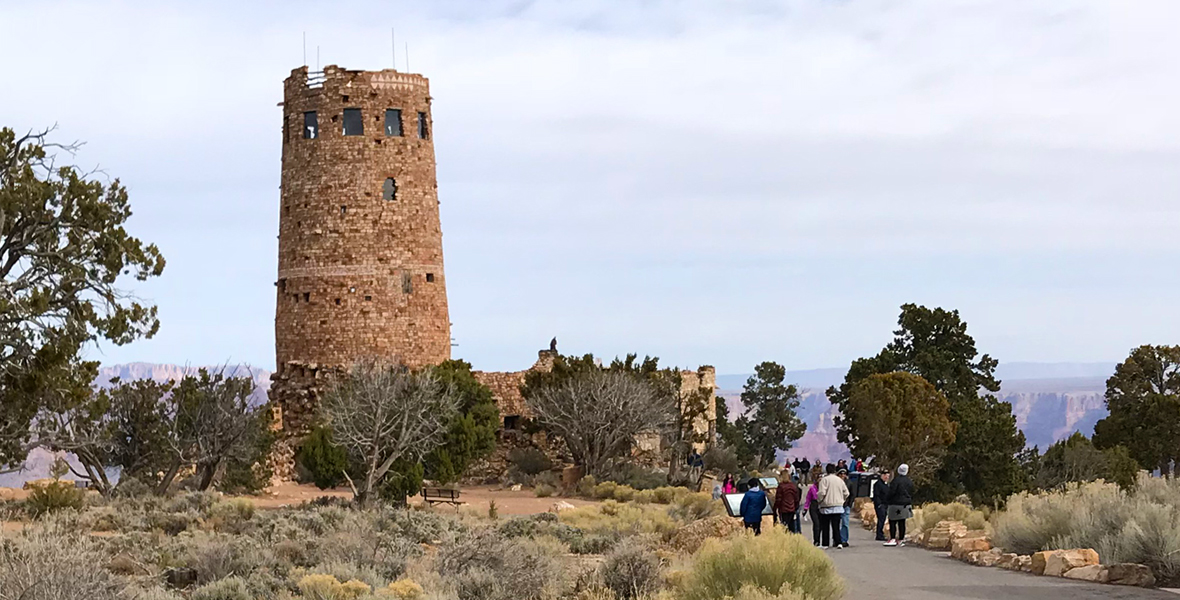
Sitting at an elevation of 7,438 feet, Desert View Watchtower is a seven story, 70 foot tall stone tower on the South Rim of the Grand Canyon within Grand Canyon National Park. Designed by architect Mary Colter and built in 1932, it reflects the architecture of the ancestral Puebloans in the Four Corners region and is the centerpiece of the Desert View Watchtower Historic District.
The Desert View Historic District includes the historic Watchtower and store, the Desert View Trading Post gift shop, the General Store and Deli, a gas station, restrooms, and a seasonal campground.
Know Before You Go
- Desert View Drive, a portion of Arizona Highway 64, is a scenic road in Coconino County in Grand Canyon National Park.
- The road stretches 25 miles from Grand Canyon Village to Desert View Point, the Desert View Watchtower, and the Desert View Historic District near the park’s east entrance.
- Along Desert View Drive, there are six developed canyon viewpoints — Pipe Creek Vista, Grandview Point, Moran Point, Lipan Point, Navajo Point, and Desert View Point — four picnic areas, five unmarked pullouts, and the Tusayan Museum and Ruin Site.
- All scenic view points are accessible by personal vehicle, except Yaki Point, which is only accessible by walking or riding the free Kaibab Rim Route (Orange) Shuttle Bus.
- There are restrooms at Yaki Point, Grandview Point, the Tusayan Ruin and Museum, and Desert View Point, some pit toilets, some flush.
- We had LTE service at the Tusayan Ruin and Museum, Lipan Point, Navajo Point, and Desert View Point… perfect for sharing a few quick photos on Instagram!
- There are two main roads with scenic viewpoints in Grand Canyon National Park: Hermit Road and Desert View Drive. Consider doing Desert View Drive and Grand Canyon Village on the first day to get your body acclimated to the elevation. On the second day, do Hermit Road, hiking or riding the shuttle bus from viewpoint to viewpoint out to Hermit’s Rest.
- Be sure to pack plenty of water, snacks, and a picnic, as well as sunscreen and lots of layers. The weather can change quickly and it pays to be prepared.






